Artist with flowering talent
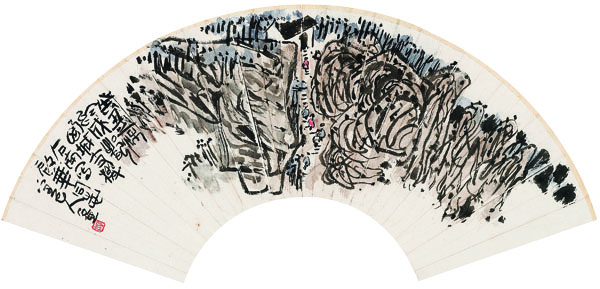
A fan painting by ink artist Chen Zizhuang (1913-76). [Photo provided to China Daily]
Exhibition on the late self-taught painter Chen Zizhuang reveals his unrestrained spirit, Lin Qi reports.
Flowers and plants are among the most favored motifs that have been revisited by painters in the past and present, at home and abroad.
Chen Zizhuang (1913-76), a late artist of classic Chinese painting, didn't care for the flowers and plants that thrived in courtyards and houses, as they had been cultivated by people rather than growing in a natural environment.
With his brushstroke, Chen zealously hailed plants growing in mountains and valleys and by waters, and which enjoyed the pleasures and embraced the hardships of nature. In them he sensed vigor and sensitivity.
When he received a commission from a museum in Chengdu, Sichuan province, in 1962, to make flora-themed paintings, Chen depicted begonias, pear flowers, daffodils and hibiscuses springing in the wild. This poetic collection of four screen paintings is regarded as a representative work in Chen's oeuvre.
The artworks are in the collection of the Yang Sheng'an Museum in Xindu, Chengdu, and now on show at Wonderland in Mind, a research exhibition on Chen's art and life at the Art Museum of the Beijing Fine Art Academy that runs through to Feb 26.
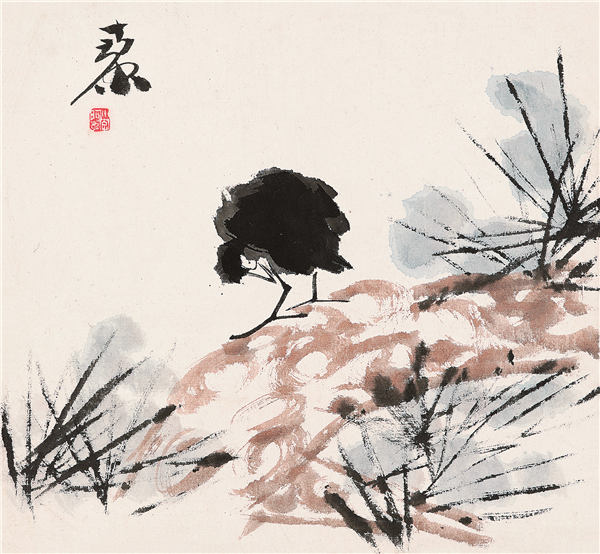
Chen's paintings on show include An Album of Flowers and Birds. [Photo provided to China Daily]
The show brings together some 100 ink paintings and calligraphy pieces from three museums in Chengdu, the city where Chen, a native of neighboring Chongqing, spent a great deal of time until his death.
Chen's tendency to hail nature and prosperous lives in the wild was linked to his own experiences.
The exhibition navigates his life and career as a legendary figure in the cultural scene in Sichuan, says Tao Yilin, the curator.
"He was born in a humble household, making a living on herding cattle while drawing on the ground. He was a self-taught painter, who earned a living by selling paintings and sometimes as a street performer of acrobatic stunts and martial arts. He was able to work as a professional artist in his middle age, and his passion for nature and painting helped him through hard times."
Chen's works also show an influence of earlier painters with mastery over capturing lives in their most vibrant and natural conditions. Chen once said: "In the beginning, I learned from Qi Baishi and Wu Changshuo (prominent Chinese art figures from the 20th century), and then I sourced enlightenment from the work of Bada Shanren (a 17th-century master artist)."
Tao says Chen's distinctive style shows a reduction in details and colors and a tasteful play with varying shades of ink, by which he presented an ambience of simplicity, aloofness and innocence; meanwhile he was able to uphold the spirit of Chinese ink traditions.
At 42, Chen was admitted to Sichuan's provincial institute for culture and history and became its youngest member. He gained in creativity and vision, thanks to the guidance of his senior colleagues there. He focused on Sichuan's landscapes and wildlife after that.
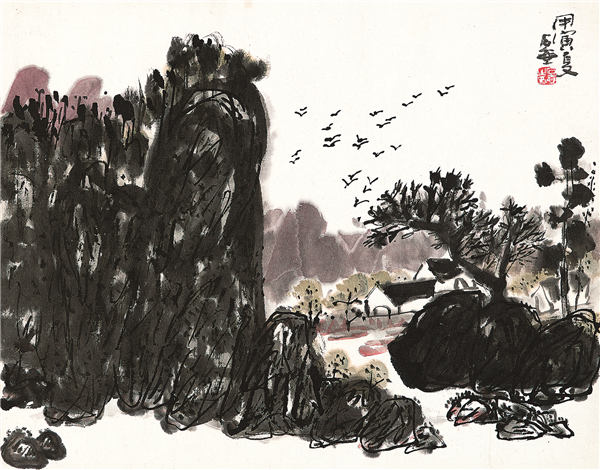
Chen's paintings on show include A Landscape of Sichuan. [Photo provided to China Daily]
Chen entered his prime time in art in 1974 and produced dozens of paintings, showing mastery with technique and the formation of his personal style. Works from that period are a highlight of the ongoing exhibition.
Despite heart trouble from time to time, Chen could travel to different areas of Sichuan, and established a style to present the ethereal atmosphere of the scenery before his eyes.
"Chen always reinforced in his work that the most important thing about art was sincerity, not fame," Tao says. "The mountains, terraces and folk customs of Sichuan formed a never-exhausting source of inspiration for him."
Many of his paintings were done on Jiajiang paper, an established brand of handmade material from Jiajiang, a county at the foot of Mount Emei, where the fine papermaking tradition dated to the Tang Dynasty (618-907). Chen believed the special paper accentuated the mood he wanted to deliver in his artworks.
Except for the commissions Chen undertook, his paintings are largely no more than 50 centimeters in length and width, mainly because he couldn't afford paper of bigger sizes. Even so, he tried to show the best of his brushwork.
"One can't call himself an artist if he isn't able to leverage his mind to a level to understand the unity of universe and all lives," Chen once said. "A small painting can as well reveal the vastness of an artist."
An exhibition of Chen's art at the National Art Museum of China in 1988 first introduced his accomplishments to a wider audience in Beijing, while the current show provides a glimpse of the deepening research into his career over the years.
Tao says Chen is a figure evoking excitement among those interested in 20th-century Chinese art, and whose work defines the openness and breadth of Chinese painting.
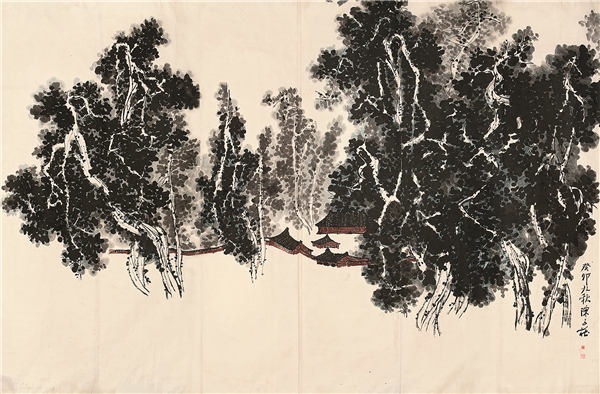
Chen's paintings on show include Cypresses. [Photo provided to China Daily]
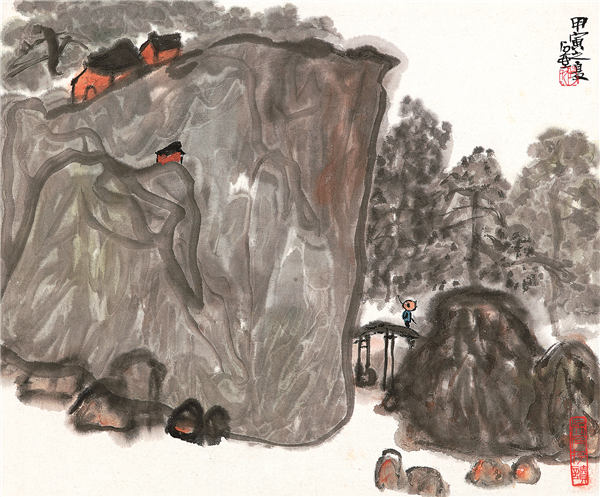
Chen's paintings on show include Cliff Over a Bridge. [Photo provided to China Daily]
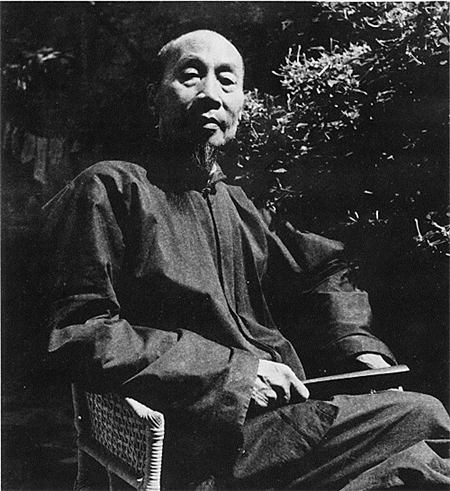
A photo of the painter. [Photo provided to China Daily]
Related articles
-
 Qi Baishi's Poetic Accomplishment Discussed at Academy's Annual Meeting
Qi Baishi's Poetic Accomplishment Discussed at Academy's Annual MeetingMore
-
 Chinese painter forges inimitable style after decades abroad
Chinese painter forges inimitable style after decades abroadMore
-
 Chinese zodiac exhibition opens in Panama
Chinese zodiac exhibition opens in PanamaMore
-
 The embodiment of beauty
The embodiment of beautyMore
-
 Classic works present a landscape of humans in harmony with nature
Classic works present a landscape of humans in harmony with natureMore
-
 The jewel in China's crown
The jewel in China's crownMore
